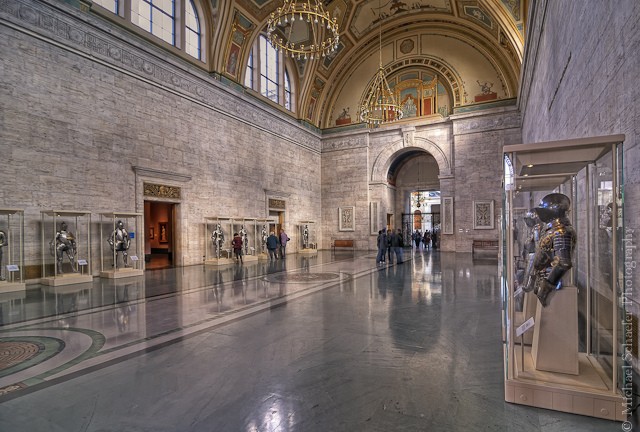The Detroit Institute of Art (DIAMETER), located in Detroit City Center, Michigan, has one of the largest, most important collections of art in the United States. In 2003, DIAMETER became the second-largest municipally owned museum in the United States. His art collection was valued at $8.1 billion in 2014. With more than 100 galleries, this covers it, making it the sixth largest art museum in the United States; the main renovation and expansion project, completed in 2007, added. The museum building is highly valued by architects. The original building, designed by Paul Philippe Crete, between the northern and southern wings with white marble as the main external material for the entire structure. It is part of the cultural center of the Historic District, listed in the National Register of Historical Localities.
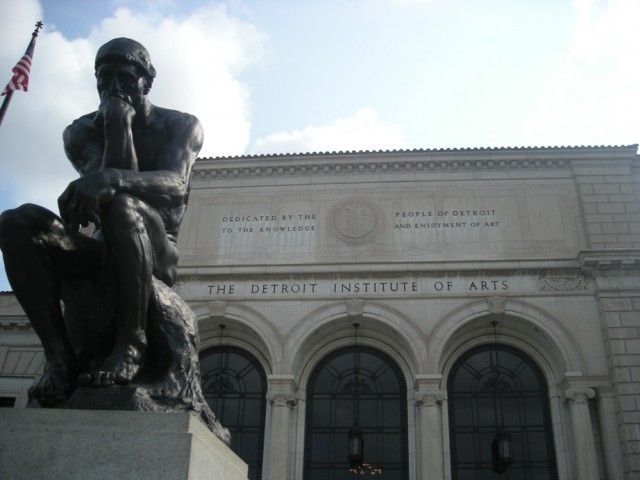
The first painting of the museum was donated in 1883, and its collection consists of more than 65 000 works. DIAMETER – Encyclopedic Museum, whose collections cover the globe from ancient Egyptian works to modern art. DIAMETER is located in the cultural center of Detroit City Center Historical District, approximately two miles (3 km) north of the city center, near Wayne University. With 594,267 visitors in 2013, DIAMETER is the 102nd most visited art museum in the world. The Detroit Institute of Art organizes major art exhibitions and also houses the 1,150-seat Detroit Cinema (designed by theater architect C. Howard Crane).
Exhibitions
When a Changed Tradition: Modernist Masterpieces in DIAMETER (June, 2003-August 2003)
This exhibition only contains parts of the DIAMETER collection from the end of the 19th century and the beginning of the 20th century and shows various artists of choice, expressed after 1900.
Then and Now: The Choice of 19th and 20th Century Art by African American Artists (July 2003 – August 2003).
Approximately 40 objects in this exhibition, organized by the General Motors Center for African-American Art, show the artistic styles of African-American artists over the past two hundred years. The exhibition includes works by Joshua Johnson, Robert Scott Duncanson, Henry Ossawa Tanner, Augusta Savage, Benny Andrews, Betye Saar, Richard Hunt, Sam Gilliam, and Lorna Simpson. Ally McGee, Naomi Dickerson, Lester Johnson, Shirley Woodson, and Charles McGee are some of the Detroit artists who were included in the installation.
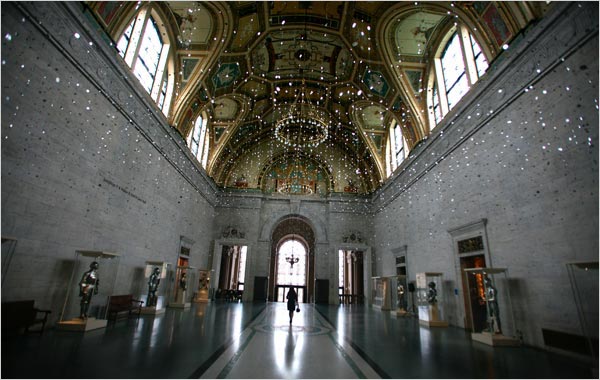
Art in the center: Buddhist sculpture (during July 14, 2003)
This exhibition contains one Buddhist sculpture in each of the Asian galleries. These sculptures symbolize enlightenment, selflessness, wisdom and serenity.
Yoko Ono freight train (September 17, 2003-19 July 2005)
The freight train built by Yoko Ono in 1999 is a German freight wagon with bullet holes and mounted on a section of the railway track shown outdoors.
Art in the center: pearl inlaid lacquer (during October 13, 2003)
This exhibition contains lacquer equipment made of lacquer tree juice.
Bay Dawoud: Detroit portraits (April 4, 2004 – August 1, 2004)
The work of Bay Dawoud, created during a five-week residence at Chadsey High School, includes large-format, colorful, photographic portraits along with videos of students from Chadsey High School, is shown in this exhibition. The selected artwork of the students from the writing and art workshops held by Bey and Ability in Chadsey and the discussion will also be shown.
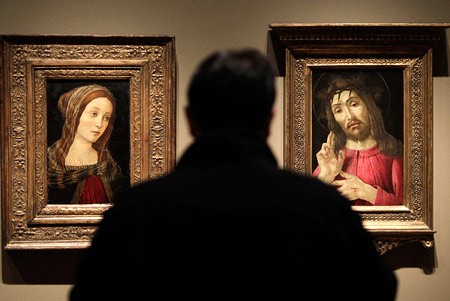
Persecution and Pleasures: Baroque Paintings from the Detroit Institute of Art (April 10, 2004 – July 4, 2004)
Machined parts by Albert Quip, Giovanni Paolo Panini, Jacob van Ruysdael, Mathieu Le Nin, Claude Lorraine, Gerard Ter Borch, Frans Sniders, and Thomas Gainsborough are shown in this exhibition, organized by the Kresge Art Museum, the Dennos Museum Center, the Kalamazoo Institute of Arts and the Muskegon Art Museum, along with the Detroit Institute of Art.
The revival of engraving in Europe: late nineteenth – and French of the beginning of the twentieth century and British seals (26 May 2004 – 19 September 2004).
Examples of engravings by James McNeil Whistler, Francis Seymour Hayden, Charles Marion, Edouard Manet, Jean François Mille and Frank Brangwin are shown at this exhibition.
Photo by Charles Schiller: American Modernist (September 8, 2004 – December 5, 2004)
Seals from Charles Schiller’s main series are shown in this exhibition, including images of his home and barns in Doylestown, Pennsylvania, captured in 1916 and 1917; shots from a 1920 Manhattan film; photographs of Chartres Cathedral taken in 1929; and images of American industry created in the 1930s for Fortune magazine. Also shown are Schiller’s views from the River Rouge Ford Motor Company authorized by Edsel Ford in 1927.
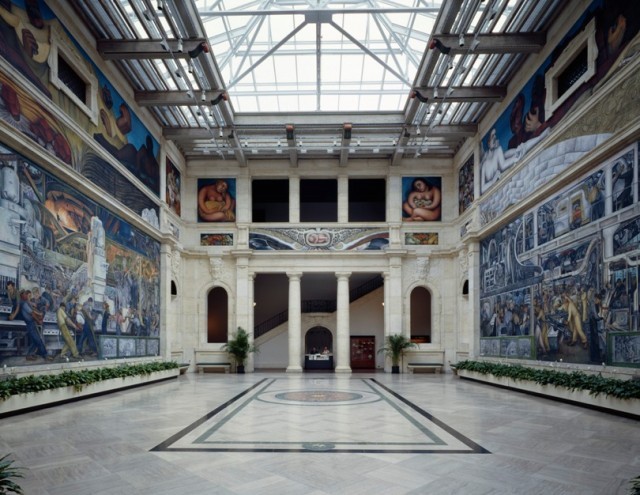
Murano: glass from Olnick Spanu collection (December 12, 2004 – February 27, 2005)
Expositions of the exhibition approximately 300 Venetians blowing glass parts made in the 20th century, organized in chronological order.
Gerard Ter Borch (27 February 2005 – 22 May 2005)
The exhibition contains paintings of Dutch life of the 17th century, created by Gerard ter Borch.
Outside the Large: Oversized Prints, Pictures and Photographs (March 16, 2005 – July 31, 2005).
Large fonts, drawings, and photographs of Abelardo Morrell, Anna Gaskell, Jenny Gage, Justin Curland, Gregory Crewson, Richard Diebenkorn, Jasper Jones, Robert Rosenberg, Judy Pfaff, Charles Burchfield, and others.
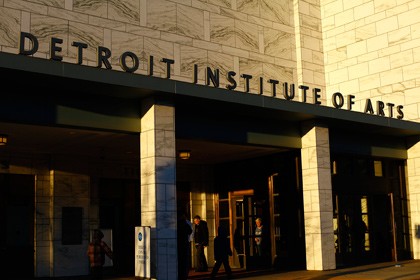
Sixty-eighth Annual Detroit Public School Student Supplement (April 9, 2005 – May 14, 2005)
Kindergarten through 12 students of the variety will show their work in the Detroit Public Library because of the reconstruction of the DIAMETER. This exhibition contains hundreds of ceramics, paintings, drawings, sculptures, and videos.
Sixty-ninth annual Detroit supplement of a student of public schools (April 20, 2006 – May 14, 2006)
Kindergarten through 12 students of the variety will show their work in the Detroit Public Library because of the reconstruction of the DIAMETER. This exhibition contains ceramics, drawings, collages, jewelry, and more.
Recent Acquisitions: Prints, Drawings, and Photos (May 17, 2006 – July 31, 2006)
The exhibition contains works from the 1500s to the 2000s including seals from artists such as Giorgio Ghisi, Judy Pfaff, Terry Winters, and drawings by Adolf Menzel and Stephen Thesnik. The work by early 20th century photographers Edwin Hale Lincoln, Alvin Langdon Cobern, and Tina Modotti is shown. The work by contemporary artists Larry Fink, Candida Hofer, and Kieraki Savi is also shown.
The big three in the schedule: Dürer, Rembrandt, and Picasso (13 September 2006 – 31 December 2006).
The exhibition shows the work of Dürer in the early 16th century, Rembrandt in the mid-17th century and Picasso, in the 20th century made from various media including wood and linoleum cutting, engraving, aquatint, drypoint, and lithography.
Annie Leibowitz: American Music (September 24, 2006 – January 7, 2007)
Pictures of Annie Leibowitz of legends about the music of roots and junior artists influenced by them are shown at the exhibition. Seventy of her portraits are on display, including B.B. King, Johnny Cash and June Carter, Willie Nelson, Pete Seeger, Etta James, Dolly Parton, Beck and Bruce Springsteen, Eminem, Aretha Franklin, Iggy Pop, Patty Smith, and the White Stripes.
Best of the best: printed publications, drawings, and photographs from the DIAMETER collection (November 23, 2007 – March 2, 2008).
DIAMETER preferred 100 of the “best” publications, drawings, and photographs from museums to 35,000 processed parts, which will be shown at the exhibition. Some of the parts to be shown are Michelangelo’s double-sided chalk and 1508 ink, showing the Sistine Chapel ceiling decoration schemes; Edgar Degas’ reddish-brown Landscape from the 1890s; and Charles Schiller’s Wheels in 1939.
Architecture
Prior to 1920, the commission was founded to select an architect to design a new building to provide the expanding collections of DIAMETER Remuneration. The commission included Ralph H. Bout, president of DIAMETER, William J. Gray, architect Albert Kahn, and industrialist Edsel Ford. W.R. Valentiner, director of the museum, acted as artistic director, and Clyde H. Burroughs was secretary. The group chose Philadelphia architect Paul Philippe Crewe as the leading architect and the firms of Zantzinger, Borie, and Medary as associated architects, with Detroit architectural firms Albert Kahn and C. Howard Crane, who made “advice and suggestions”.
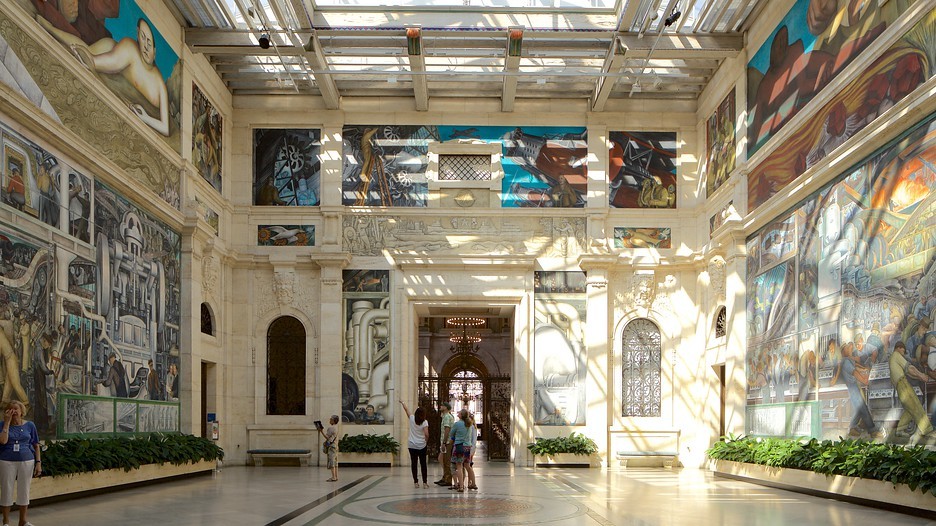
Work of art
Edsel Ford authorized frescoes by Diego Rivera for the DIAMETER in 1932. Made in the style of frescoes, five sets of large frescoes are collectively known as the Detroit Industry, or Man and the Machine. The frescoes were added to what was the courtyard; it was roofed when the work was done. Widely considered to be great works of art today, it did not necessarily take place when they were finished. Architect Henry Shepley, a close friend of Crete’s, would have written: “These [frescoes] are cut in color, scale, and composition. They were designed without the slightest attention paid to fine architecture and decoration. They are quite simply a parody on behalf of art. Their themes, with the political background of the proletariat’s struggle, caused a longstanding disagreement between admirers and detractors.
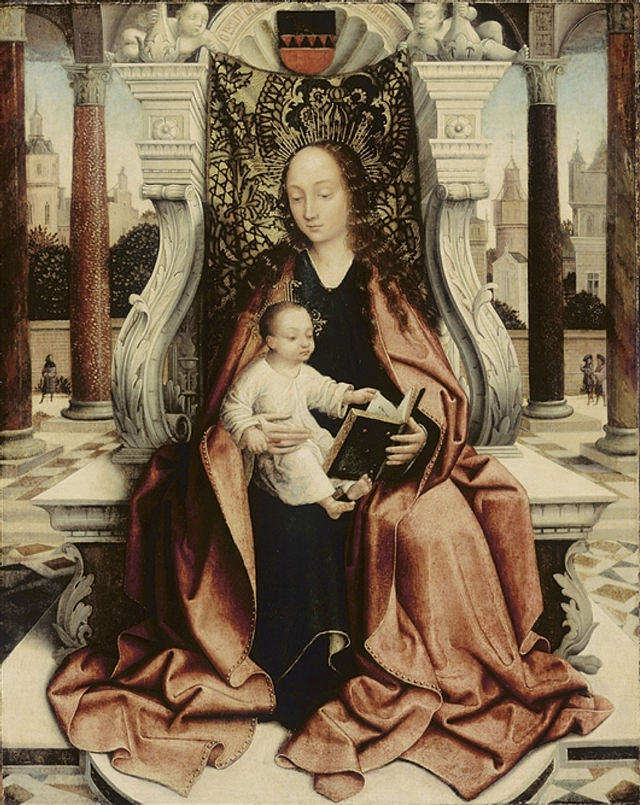
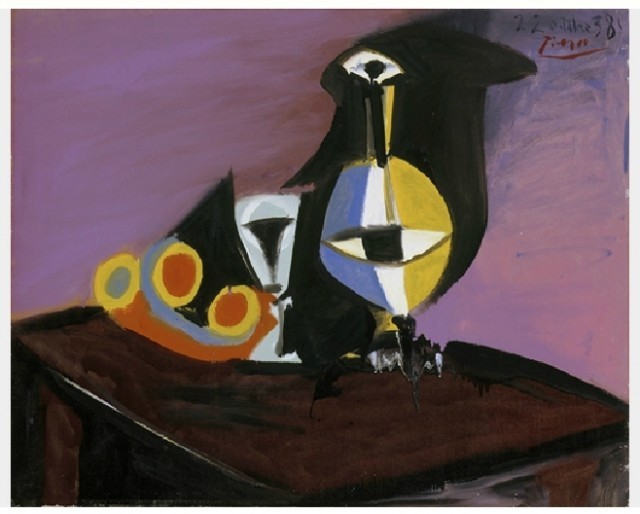
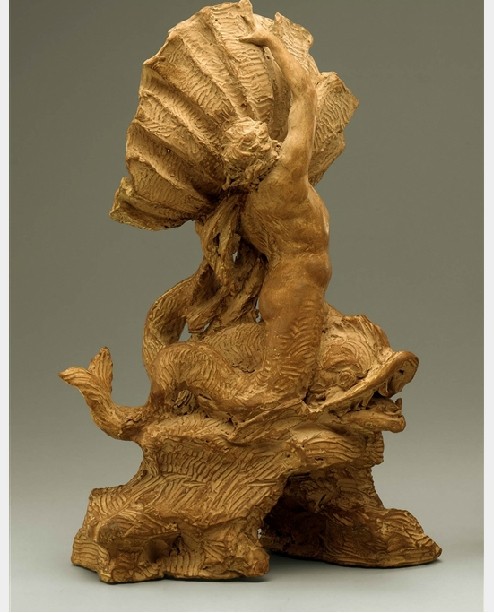
During the McCarthy era, the frescoes survived only through a prominent sign that identified them as legitimate art; the sign further stated unequivocally that the artist’s political motivations were “disgusting. Today, the frescoes are celebrated as one of the DIAMETER’s finest assets, and even as “one of America’s most important monuments.
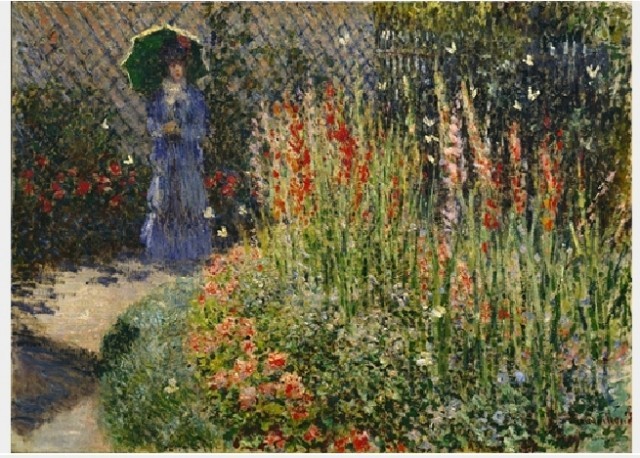
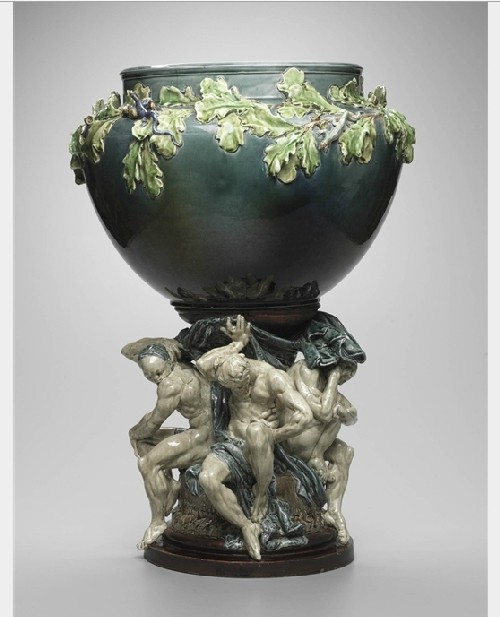
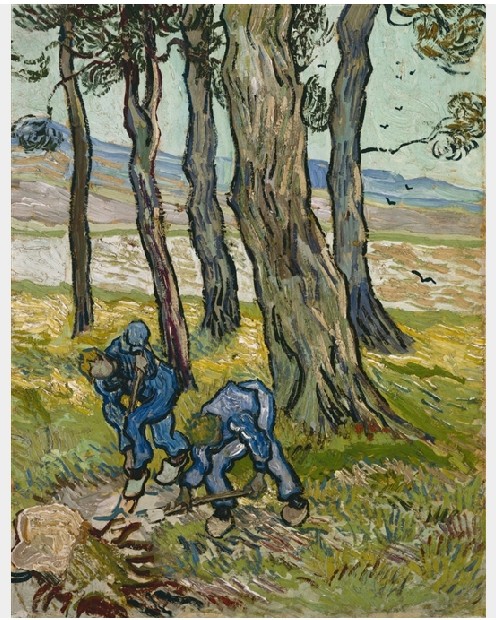
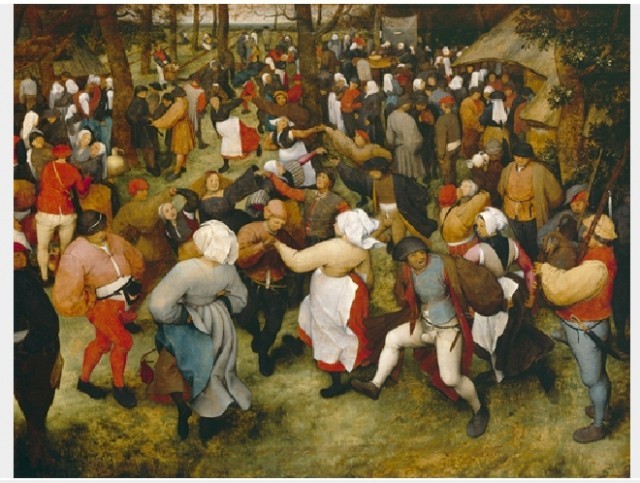
The building also contains tangled ironwork by Samuel Ellin, tiles from Pewabic earthenware, and architectural sculpture by Leon Hermann.
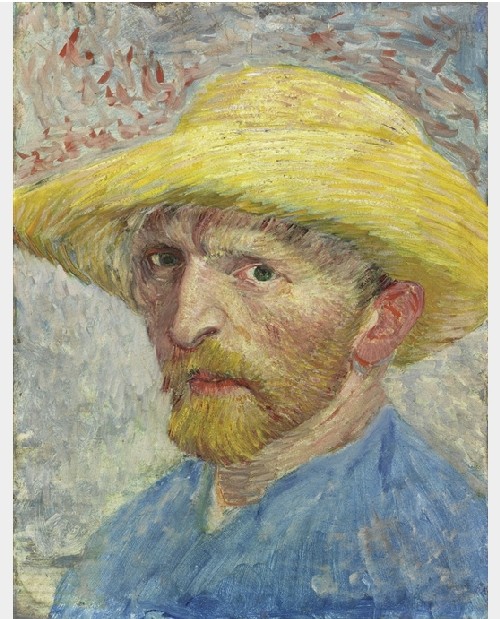
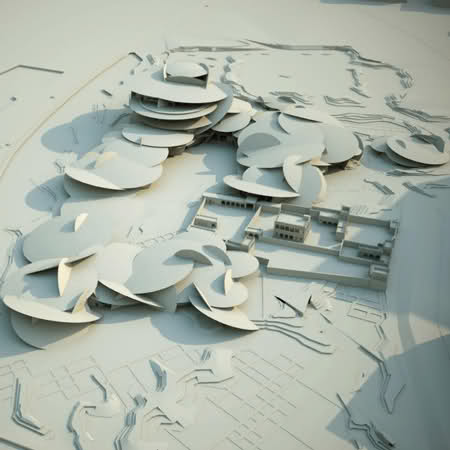
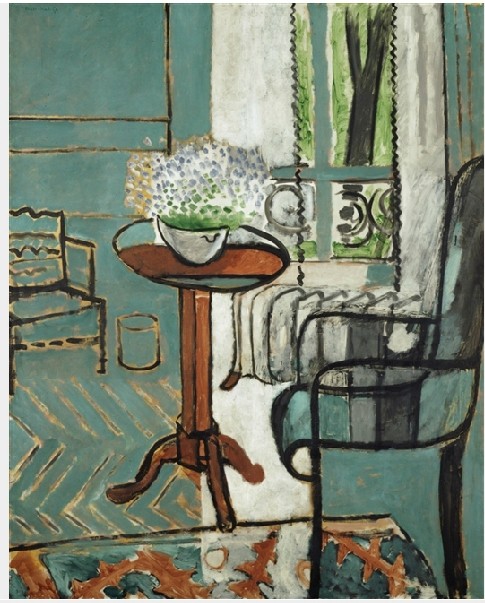
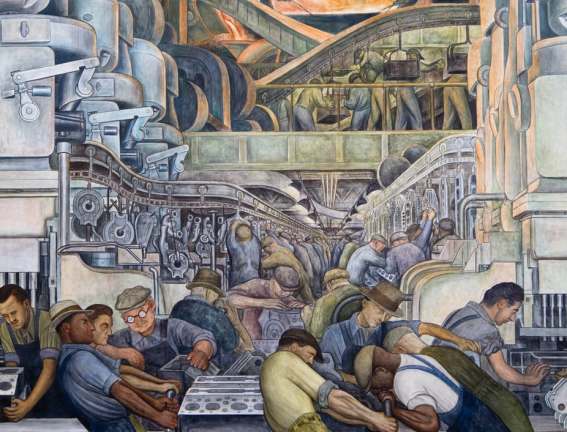
History
The museum had its origins in a tour of Europe in 1881, made by the magnate of the local newspaper James E. Scripps. Scripps kept the magazine of his family’s five-month art and culture tour in Italy, France, Germany, and the Netherlands, parts of which were published in his newspaper The Detroit News. The series turned out to be so popular that it was republished in book form called Five Months Abroad. The popularity inspired by William H. Brearley, the newspaper’s advertising department manager, organized an art exhibition in 1883, which was also extremely well received.
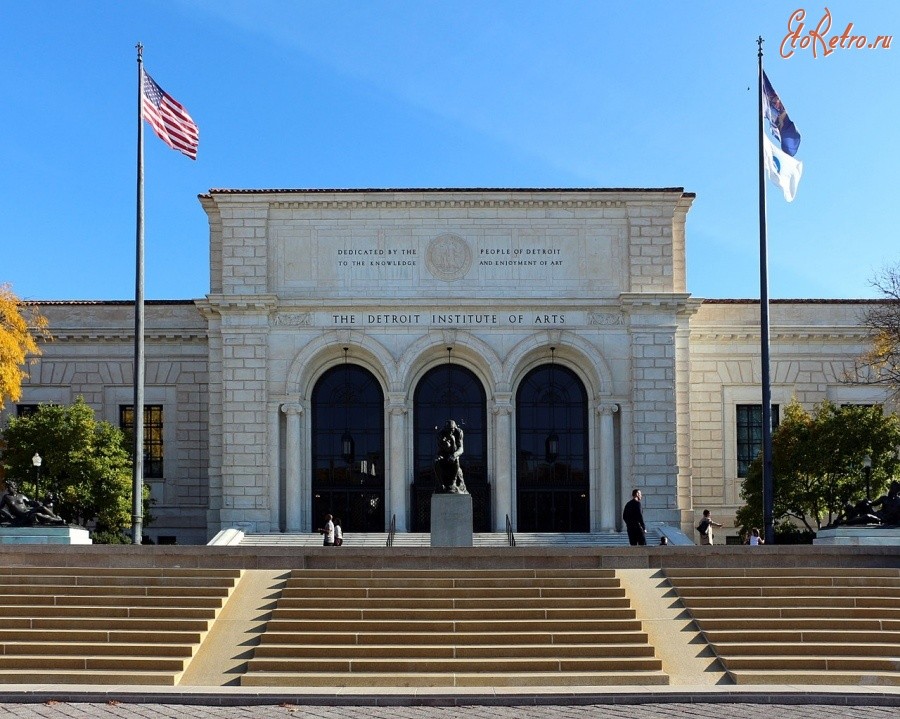
Brearley convinced many leading Detroit residents to promote to establish a permanent museum. This was originally called the Detroit Museum of Art. Among the sponsors were James E. Scripps, his brother George H. Scripps, Dexter M. Ferrie, Christian H. Bull, General Russell A. Alger, Moses W.. Field, James McMillan, and Hugh McMillan, George H. Hammond, James F. Joy, Francis Palms, Christopher R. Mabley, Simon J. Murphy, John S. Newberry, Kirenius A. Newcomb Sr., Thomas W. Palmer, Philo Parsons, George B. Remick, Allan Shelden, David Whitney Jr., George W.N. Lothrop and Hiram Walker.
With great success from their first exhibition, Brearley then challenged 40 of Detroit’s leading and distinguished businessmen to contribute $1,000 each to help fund the permanent museum building. With $50,000 coming from Scripps alone, their goal was within reach. By 1888, Scripps and Brearley had incorporated the Detroit Museum of Art, filling it with more than 70 pieces of art purchased by Scripps during his time in Europe.
Not officially announced as the founder of the Detroit Institute of Art, Scripps and Brearley were indeed the founders of DIAMETER’s predecessor, the Detroit Museum of Art With the success of the arts and the rapidly expanding automobile industry, families flocked to the city; eager to expand the vision that Scripps originally dreamed of, the new building was raised and the DIAMETER was reborn.
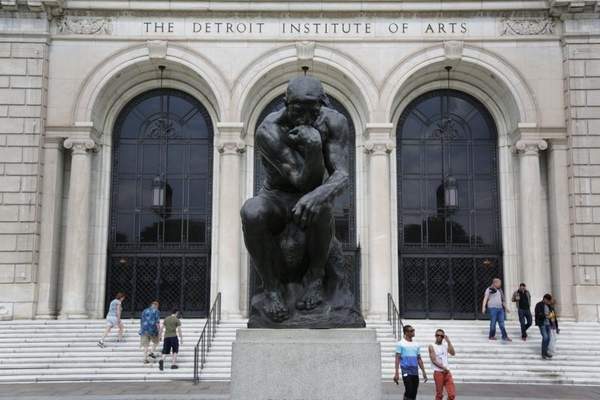
In 1922, Horace Rackham donated the casting of the sculpture of Auguste Rodin, the Thinker, acquired from the German collection to the museum, where it was shown, while the new building was under construction. The work was placed in the Grand Hall of the new museum building. Once upon a time, in subsequent years, the work was moved out of the building and placed on a support in front of the building, standing in front of Woodward Avenue and the Detroit Public Library across the street.
In 1970, Anna Thompson Dodge bequeathed the French content of the 18th-century music room from her home, the Terrace, to the museum at her death.
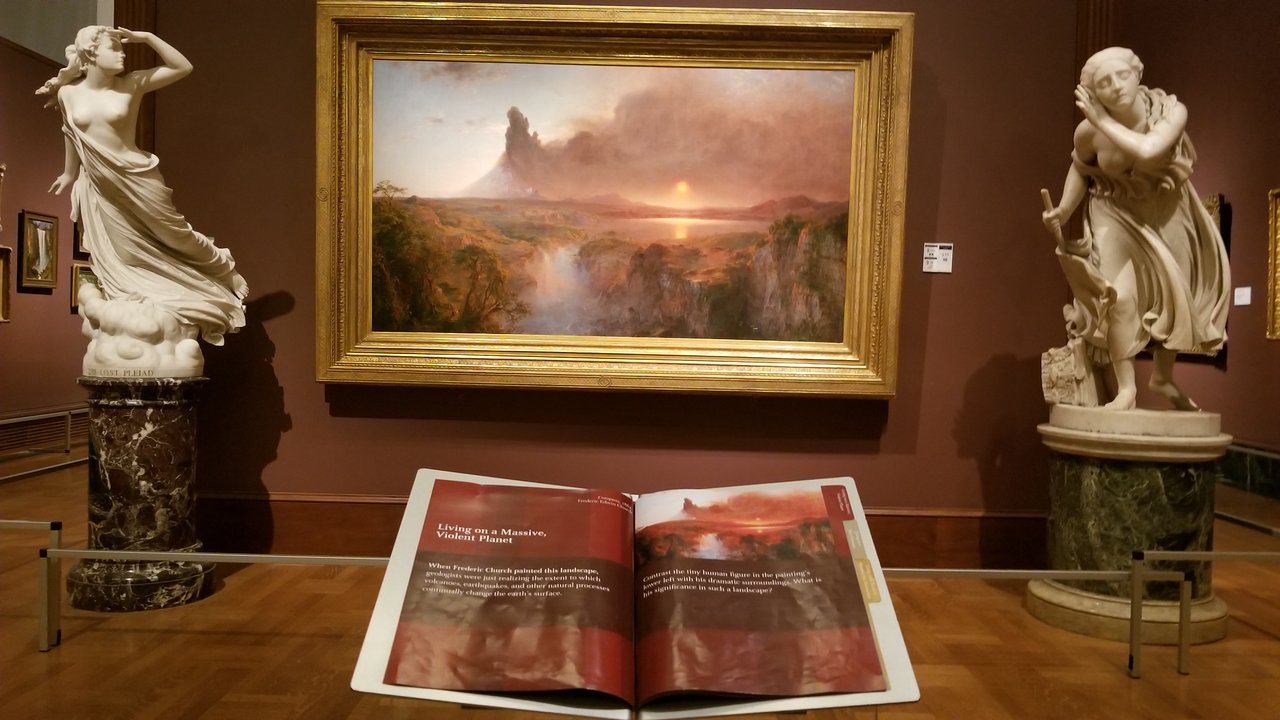
A 1976 gift of $1 million from Elinor Ford created the Department of African, Ocean, and New World Cultures.
On February 24, 2006, a 12-year-old boy attached a piece of chewing gum to Helen Frankenthaler’s 1963 bay resume, leaving a small color. The painting was valued at $1.5 million in 2005 and is one of Frankenthaler’s most important works. The museum’s conservation laboratory successfully cleaned and restored the painting, which was placed, returned to the gallery in late June 2006.
Marketing
In addition to the main art exhibitions in the museum’s 1,150-seat theater and annual formal entertainment fundraising events, such as Les Carnaval des ArtStars in November, another Detroit Institute of Coordinated Arts events includes the annual “Stroke of Concern”, the leading corporate-sponsored fashion event, showcasing celebrities and models who showcase the latest fashion trends, usually supported at the Renaissance Winter Garden, the Fox Theater, or the Detroit Institute of Art in August to celebrate Detroit Fashion Week.
In 2013, the Detroit Institute of Full Arts presence was 594,000, a known increase from 2011, when 429,000 people went. Since 2012, 79 percent of visitors a year to the institute lived in one of the three surrounding counties of Wayne (which includes Detroit), Meikom, and Auckland.
Finances
In 2012, the gift was $89.3 million and provided an annual return of approximately $3.4 million in investment income; while admissions, museum café restaurant, and goods and book sales from the museum’s gift store generated approximately $3.5 million per year or just 15 percent of the annual budget. The museum made $60 million from 2008 to 2012, reducing its annual operating budget from $34 million in 2008 to 25.4 million in 2012. In 2012, voters in three of the largest cities and towns approved a property tax, or millage, within 10 years, which is expected to earn $23 million a year by saving the museum from cuts. In August 2012, the museum’s website expressed an assessment to voters for their support. The museum offers Wayne, Auckland, and Meikom County residents free general admission for the 10-year millage approved in 2012. In 2012, the museum has set an updated long-term goal to fundraise $400 million to restore its gift, while the millage in fact.
To prevent the possible sale of the works, the museum supporters developed what was called a major deal. According to the plan, the museum will earn $100 million, nine private foundations promise $330 million, and Michigan will contribute $350 million for a total of $820 million, which guarantees pensions for municipal employees. In turn, the city of Detroit will give the collection and the building to the non-profit enterprise, which already manages the museum. This plan was challenged by other creditors, who claimed that it considered them illegally and asked them to make their own assessment of the museum’s collection. Some lenders came forward with offers from other parties to buy the works of art for amounts higher than Christie’s assessment. Meanwhile, on May 13, 2014, Detroit Emergency Response Manager Kevin Orr asked that Detroit automakers add $195 million to make a major deal stronger.
Opening in 2014, the president of DIAMETER W. Graham. DIAMETER W. J. Beale and Executive Vice President Ann Erickson received significant bonus raises of $2,014 and $50,000 in 2013, sparked a lot of anger among Wayne, Make County, and Auckland County taxpayers, and Auckland County commissioners threatened to stop Auckland County from participating in the DIAMETER. During a meeting on October 23, 2014, the Auckland County commissioners warned the chair of the board of the DIAMETER, Gene Gargaro, that they had drafted a resolution to terminate the Auckland County Arts Authorities that are assembling the Auckland County millage and handing it over to the DIAMETER. The commissioners are expected to attend the DIAMETER board meeting in November. There are three or four Internet petitions requiring Bill and Erickson to step down from their posts and return their awards.
On November 4, 2014, the DIAMETER Board notified the suburban authorities that it will reimburse the museum for the $90,000 prize awarded to three top officials in 2013.
A possible bankruptcy settlement did not require DIAMETER to sell any art.






